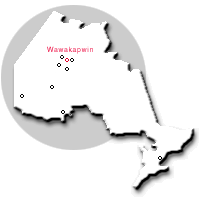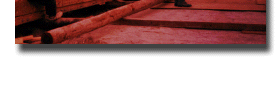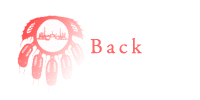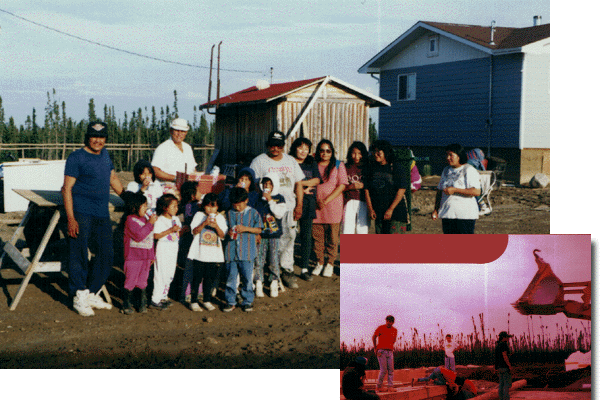As can be noted in the enclosed Community Profile, the community of Wawakapewin is one of the smallest within the territory of Nishnawbe-Aski Nation, insofar as membership, housing and infrastructure is concerned. Low membership necessitates minimal support services with inadequate funding for full time employment in those areas enjoyed by larger communities.
Historically, the Wawakapewin area had been very important not only to its' people but also to people and family clans from surrounding and outlaying communities. This was due to the abundance of fish and game that is always present in the area caused by the convergence of four river systems into the Asheweig River which in turn flows into the Winisk River. Enclosed is an excerpt of a prologue of an old community document describing the origin of the name. Certain place names of the area tell of these people who sought refuge and help in times of famine or sickness. The main family clan, the Frog clan, who had the gifts and attributes of healing and knowledge always provided these needs. Historically, many of the important and remembered leaders came from the area also. The Wawakapewin people still maintain most of their traditional territory.
Location:

The First Nation community of Wawakapewin is located at Long Dog Lake in far northwestern Ontario. The community is situated along the southeast shore of the Asheweig River system, which is a tributary of the Winisk River. Wawakapewin is, however, very close to the height of land dividing the Winisk River drainage basin from the Severn River Basin. The National Atlas Index identifies Wawakapewin (Long Dog Lake) to be located at 53 26' north and 89 4' west.
The community is also surrounded by several First Nations which are Kitchenuhmaykoosib (Big Trout Lake), Wapekeka, Kasabonika, Wunnumin Lake and Kingfisher Lake. Kasabonika First Nation is the the closest to the community at 45 km. Which is located northeast of Wawakapewin. By air, Wawakapewin is 580 km north of Thunder Bay and 350 km north of Sioux Lookout and 290 km south of Hudson Bay Coastline.
Population:
According to Indian and Northern Affairs Canada (INAC), Wawakapewin First Nation has an on reserve population of 34 persons (December 1998 statistics). In 1992, the community had identified 58 people as belonging to Wawakapewin. The membership has fluctuated due to members having to relocate to other First Nations thereby being required to join the band membership of that First Nation in order to access various programs and services. The recent Capital Planning Study Update indicates Wawakapewin to have an average annual growth rate of three percent. The leadership of Wawakapewin have indicated the population figure is misleading as a large migration of people is expected once all the planned infrastructure, programs and services are completed.
Languages:
There are two languages that the people of Wawakapewin use. It is Oji-cree (mixed Ojibway and Cree) and English. A good majority of the membership speak both languages comfortably. The elders are the only people that are not comfortable with the English Language. Oji-Cree is also a written language which only several of people still use.
Communications:
The community has one telephone and one facsimile line for communications with the outside world. Bell Canada had erected a microwave tower in the middle 1980's with a switching station in Wunnumin Lake First Nation, thus Wawakapewin is part of the Wunnumin Lake Telephone system. There is no long distance charges for calling Wunnumin Lake and Kingfisher Lake. The telephone and facsimile are located at the administrative office complex. The Asheweig Winter Roads Corporation had just recently provided the First Nation with a satellite phone. This is to be used during the construction of the Winter Road Network.
Community Infrastructure and Services:
Wawakapewin First Nation is small, comparitively under-serviced, and far removed from the industrial, administrative and economic centres of Northwestern, Ontario. Even by Northwestern standards, the community is tiny. It has a small resident population, no nursing station or school, and has only recently acquired water, sewage and electrical services. The community consists of a linear arrangement of comparatively new frame houses along a terrace overlooking Long Dog Lake.
Accommodation Facility:
The First Nation has motel type set-up for out of town visitors. This facility has seven rooms, with a kitchen and dining rooms and also includes indoor bathroom facilities. The First Nation with a kitchen and dining room and also includes indoor bathroom facilities. The First Nation charges a nominal fee for overnight or extended stays.
Community Infrastructure and Services:
Wawakapewin First Nation is small, comparitively under-serviced, and far removed from the industrial, administrative and economic centres of Northwestern, Ontario. Even by Northwestern Ontario standards, the community is tiny. It has a small resident population, no nursing station or school, and has a only recently acquired water, sewage, and electrical services. The community consists of a linear arrangement of comparatively new frame houses along a terrace over looking Long Dog Lake.
Accessibility:
The community is accessible by chartered aircraft and dependent on the time of the year. The aircraft would be equipped with either floats or skis. A winter road provides seasonal access for approximately two months of the year. Wawakapewin is part of the Asheweig Winter Roads Corporation, a net work of roads linking five other First Nations with each other and to southern centres through Pickle Lake, Ontario.
Transportation:
Transportation is covered in the previous section under "accessibility." The First Nation is in the earliest stages of developing a plan whereby an all weather gravel airstrip is being considered. If an airstrip is not feasible, another option is to build an all weather access road to Kasabonika First Nation. This might be explored as part of the Asheweig Winter Roads Corporation realignment and permanent all weather road initiative.


Mailing Address
Wawakapewin First Nation
C/O Shibogama First Nations Council
Box 449 Sioux Lookout, Ontario P8T 1A5
(807) 442-2567
(807) 442-1162 fax
Chief Sheila Childsforever
Chief of Wawakapewin First Nation
sheilac@wawakapewin.ca
Joshua Frogg
Band Manager
joshuaf@wawakapewin.ca
Berry Frogg
Ecomic Development Officer
berryf@wawakapewin.ca
Noreen Meekis
Health Coordinator noreenm@wawakapewin.ca
Melissa Childforever
Band Administrator
melissac@wawakapewin.ca

